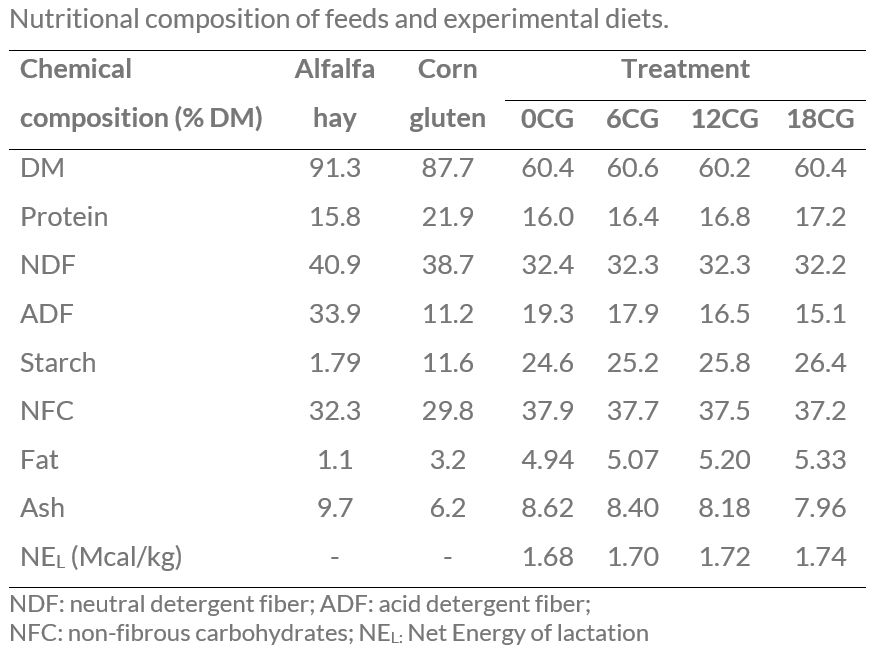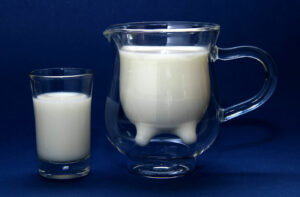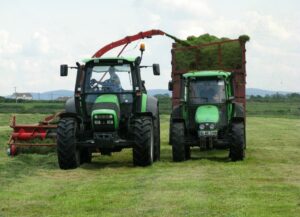Maria Villagrasa
Corn gluten feed derives from the wet grinding of corn kernel and is the part of the grain that remains after the extraction of as much starch, gluten and germ as possible.
It consists mainly of corn bran and corn maceration liqueur (the liquid is separated after maceration), but can also contain distillery solubles, germ flour and small amounts of end products from other microbial fermentations. Its chemical composition is quite variable as it depends on the grinding process and the relative proportions of its components.
It has in general a high fiber concentration with 36% DM basis of neutral detergent fiber (NDF), and considerable concentrations of starch (8-30%) and protein (14-24%). The total fat and linoleic acid contents are like those of the corn kernel. Corn gluten is richer in minerals than the whole grain; calcium content can range from 0 to 0.1 and a 0.3%, with vitamin concentrations like those in the grain, although much of the thermolabile vitamins are destroyed during the process.
Its palatability is acceptable, and its energy content is like that of barley, since its fiber has very little lignification (1.2%). It is used in the feeding of ruminants as an energy and protein source to replace concentrates or a combination of concentrate and forage according to its availability, price and other factors.
Another feed commonly offered to dairy cows is alfalfa, although when it’s not readily available, other ingredients such as corn gluten have been used to replace it. However, the optimal amount of alfalfa that can be substituted for corn gluten in dairy cow rations is still unknown.
To this end, a study (Darabighane et al., 2020) determined the amount of alfalfa hay in low forage diets that could be replaced with dry corn gluten feed without negatively altering the production of cows in lactation.
Eight Holstein cows were divided into four groups and each was offered a different diet. Experimental diets were based on corn silage and had blends of similar concentrate, but with different proportions of alfalfa hay and corn gluten feed (DM basis):
- 8% corn gluten-free alfalfa (0CG)
- 5% alfalfa and 6.26% corn gluten (6CG)
- 26% alfalfa and 12.5% corn gluten (12CG)
- No alfalfa and 18.8% corn gluten (18CG)
The composition of alfalfa hay with respect to corn gluten was: dry matter 91.3 vs. 87.7%, organic matter 90.2 vs. 93.7 %, CP 15.8 vs. 21.9 %, NDF 40.9 vs. 38.7%, acid detergent fiber (ADF) 33.9 vs. 11.2 %, non-fibrous carbohydrates 32.3 vs. 29.8 %, fat 1.10 vs. 3.20 %, starch 1.79 vs. 11.6% and ash 9.70 vs. 6.20%. The nutrient composition of the experimental diets is in the table.

As corn gluten replaced alfalfa, concentrations of protein, starch, fat and net energy of lactation increased, while ADF decreased as seen in the table. This result can be explained because corn gluten had less ADF and more protein and fat compared to alfalfa.
Corn gluten caused DM intake to increase
Replacing alfalfa with corn gluten caused it to linearly increase daily DM intake from 23.7 kg in the gluten-free diet to 25.8 kg in the diet with 18% gluten. With regards to production data no differences were observed between treatments in the production of energy-corrected milk (40.5 kg/day).
However, adding corn gluten increased milk production from 39.3 kg/day in the gluten-free diet to a maximum in the diet with 12% gluten (42.2 kg/day), without an additional response observed in the diet with 18% gluten (41.5 kg/day).
Milk fat production decreased as the proportion of gluten increased (1.42 in the gluten-free diet and 1.22 kg/day in the diet with 18% gluten), as did the percentage of milk fat (3.63% in the gluten-free diet at 2.96% in the diet with 18% gluten), and the fat-to-protein ratio (from 1.20 in the gluten-free diet to 0.95% in the diet with 18% gluten).
In contrast, milk protein production increased linearly by including gluten in the diets (from 1.18 in the gluten-free diet to 1.29 kg/day in the diet with 18% gluten).
Effects of corn gluten on ruminal fermentation
Ruminal pH decreased linearly as corn gluten increased in the diets (from 6.32 in the gluten-free diet to 5.94 in the diet with 18% gluten).
Moreover, by increasing the amount of corn gluten, the proportions of acetate and ruminal butyrate decreased while the molar proportions of propionate increased.
Both the production results and those of ruminal fermentation indicate that, as corn gluten replaced alfalfa, DM intake also increased, providing additional energy for the synthesis of milk and its components. The production and percentage of milk fat was lower for the diet with 18% gluten because the molar proportions of acetate and butyrate were lower.
Conclusions
The results of this study suggested that replacing 12% of alfalfa with corn gluten increased milk and protein production due to increased DM intake, but replacing all of the alfalfa with corn gluten reduced milk fat production.
Reference
Babak Darabighane, Farzad Mirzaei Aghjehgheshlagh, Ali Mahdavi, Bahman Navidshad & John K. Bernard (2020) Replacing alfalfa hay with dry corn gluten feed alters eating behavior, nutrient digestibility, and performance of lactating dairy cows, Italian Journal of Animal Science, 19:1, 1266-1276.
© 2021 Dairy Knowledge Center. All Rights Reserved.








